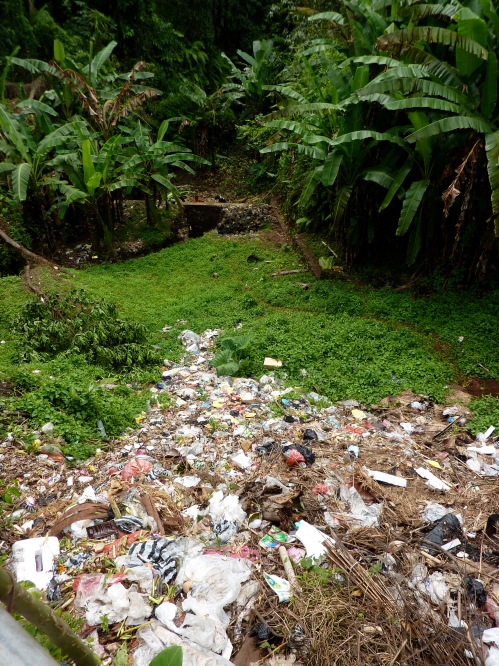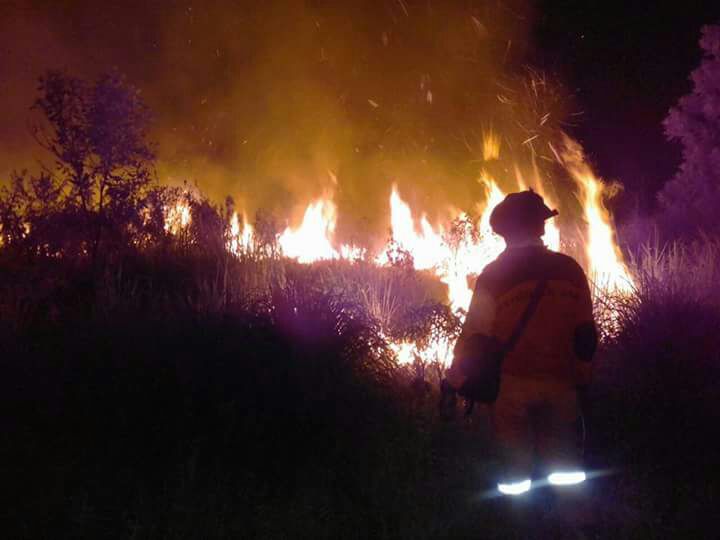In January, 2011, I began exploring some of the environmental challenges facing the people of Bali. Amongst these was the continuing and ubiquitous problem of the plastic, in particular the plastic bag in its various forms.
Although Bali became my temporary home over an 18 year period, and I still travel widely throughout Indonesia, my earliest Asian travels were in Malaysia, southern Thailand and Sumatra. It was here in the 1970s and early 1980s I began noticing just how fast technology was changing as expanding market economies brought new products into countries that were later to experience unprecedented economic growth. During those early travels I was amazed at the remarkable array of plastic household objects that could be found in every marketplace. Along with plastics was a massive amount of signage devoted to the promotion of domestic washing detergents.
Back then I often wondered how long the plastics would last in the tropics and how people would manage their disposal. Widespread and increasing use of detergents also caused me concern as I remembered the devastating impact of detergents on the magnificent stands of Norfolk pines that once lined the seafront parks of Coogee, Bronte, Bondi and Manly, in 1960s Sydney. When non-biodegradable detergents were introduced to Sydney’s Roman sewerage system, they became potent additives in humid on shore breezes quickly stripping away the waxy salt protection on the leave of 80 year old pines. I was also conscious of the connection between excessive use of phosphate detergents and eutrophication.
With both innovations it was the intrinsic lack of biodegradability that was cause for the gravest concerns. While production of phosphate free, biodegradable detergents and more efficient plastic recycling have greatly reduced possible environmental impacts, back then these options simply weren’t on the horizon. Today plastic recycling has become quite widespread, but the ubiquitous and largely non-degradable plastic bag still presents many environmental problems, mostly in the hydrosphere.
Dominance of cultural patterns in Bali
When I eventually visited Bali I was amazed by the sheer dominance of cultural patterns, and by its remarkable self sufficiency. In particular, what caught my attention was the intricacy of Bali’s rice terracing and its complex irrigation and water management systems. Bali’s natural drainage is simple enough, a radial system with rivers and valleys flowing out from central mountains. Water has eroded deep narrow gorges through soft volcanic materials.
Download a large format map of Bali from the Indonesian National Survey and Mapping Coordination Body (BAKOSURTANAL).
Although wet rice agriculture and dry upland farming developed over the preceding thousand years or so, cultivation and irrigation were engineered in such a way that erosion and top soil loss was minimised. Bali’s rivers ran clean.

Beyond the natural movement of water, human intervention created a complex hierarchy of dams, irrigation channels and tunnels. Fed by spring water, supplemented by rainfall an extrardinarily complex and orderly irrigation system was developed. American anthropologist, J Stephen Lansing, described the orderly set of arrangements, that are still in operation as ‘order as it arises from below’.
The major natural source of water on the island is from a series of crater lakes. Each one of these has one major temple known as a Pura Ulun Danau from where advice on likely supplies of water, and appropriate times for planting, is received. In essence irrigation decision making arises from the deliberations of numerous democratic irrigation societies, drawing their understanding and approach to management from a series of water temples and irrigation priests set at different levels within drainage system and all connected historically and ritually, with the appropriate Pura Ulun Danau. Such involution in the understanding, process and technology of irrigation is most effective while practices remain largely unchanged. A helpful but brief explanation of this system can be found in the following video, The Goddess and the Computer.
While the initial construction of this system probably required the leadership of a politically hierarchical structure, such as a Raja and court, subsequent operation doesn’t reflect such hierarchy and like so many other aspects of Balinese life shows significant refinement and order withing a long established tradition. Most disruption occurs in such systems, when innovation is imposed on the system, either by political master, or the market place. Lansing notes that this happened, under Indonesia’s ‘Green Revolution’ in the 1970s. He argues that this didn’t lead to increased yields but rather to a collapse of rice production.
For more on Lansing’s theories check the video ‘A Thousand Years in Bali‘.
Challenges to irrigation and drainage systems
Change can also be the result of the operation of the ‘free’ market. In Bali the introduction of plastics, with the growth of ‘modernism’ and tourism, has presented challenges to irrigation and drainage systems. Traditionally the packaging was made from banana leaves, woven split bamboo or young coconut palm leaves. Traditionally packaging was biodegradable. Modern packaging employs large amounts of PVC. The plastic bag and PVC plastic packaging has been both an unsightly and an environmentally disruptive addition to the Balinese irrigation and drainage systems.
In rivers and water courses plastic is a significant impediment intercepting and deflecting natural flows, interfering with soil biology and presenting a long term problem that is resistant to the natural processes of decomposition.

Plastics also make their way down rivers and are eventually carried into surrounding seas.

Once in the ocean plastics can have a major impact on marine animals, particularly dolphins and turtles.
While more than 70% of Indonesia’s plastics manufacturing plants are in Java and a mere 3% in Bali, the tourism driven boom economy of Bali ensures that a disproportionate amount of plastic is consumed on this small island. (For further detail see Plastic Packaging Manufacturing in Indonesia: Indonesia Industry Report and Market Research)
Tourism driven development in Bali initially out stripped the capacity of the provincial and local government to to respond with effective recycling strategies. Despite the big problem that plastic presents, there is some hope. People are beginning to recognise the importance of plastic recycling. Plastic recycling depots have now been established and teams of poorer workers from Java have begun to collect certain types of plastic from villages, roads sides and irrigation channels for recycling. These freelance plastic collectors, rather uncharitably dubbed pemulung and held in some suspicion by villagers, perform a useful function.
Creative initiatives have been promoted to draw public attention to the problem. Some school children, for example, have created artworks and sculptures from plastic as a way of drawing attention to the problem. In one community plastic has been recycled into plastic bricks that have been used to construct a huge plastic pyramid to draw attention to the problem.
Local government has also begun stepping up to the challenge of garbage collection. This municipal garbage truck was photographed as it collected garbage along Jl Bisma, in Ubud.

Educating the broader society
In modern Balinese society, just like modern Australian society, there is a need to understand the processes operating in the environment. It is easy to overlook the important forces in nature that help to keep out environment in balance. Traditionally Balinese people have held spiritual notions of the recycling process. Bhoma, child of Vishnu and Ibu Pertiwi (mother earth) has performed the magical task of transformation.
With Bhoma as the force of of transformation there was no need to understand the micro-ecological processes involved in the decay of leaves and food scraps, or the way soils are formed. These things were Niskala, all part of the unseen and magical work of the gods. As the god of recycling this was primarily Bhoma’s responsiblty. Provided humans played their part, acting in harmony with nature, then natural processes remained intact and unimpeded, so all remained in equilibrium and Bhoma was free to carry out his work skimming across the earth and transforms rubbish into the food of life.

Neglecting the important natural recycling that goes on in all environments and over burdening this natural recycling with non-biodegradable products can leads to unexpected consequences. Bhoma’s powers are limited, he may be the God of recycling but he doesn’t know much about 20th century products like plastic, agricultural chemicals and aluminium. How he’ll manage climate change and global warming, as the 21st century progresses is in the laps of the gods.
The best management strategies will probably be found in continuing education of people.




Leave a comment